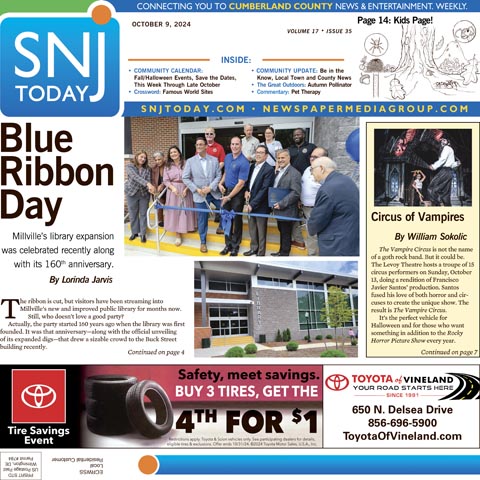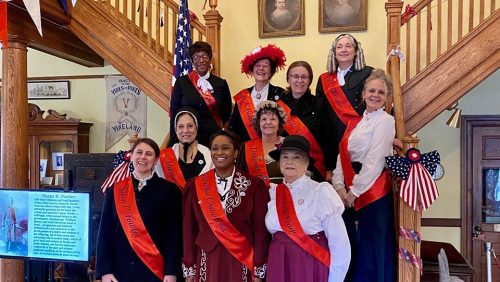The genealogy of Gloucester County’s townships over the past several centuries offers a fascinating menu of changes and ‘what if…” possibilities as a result of ever-shifting boundaries and jurisdiction of towns. So, it seems appropriate to trace the line of Greenwich Township to understand how Cumberland County’s more immediate neighboring townships came to be.
The formation of Greenwich Township occurred on March 1, 1695. Named after the town in England, it was incorporated after the American Revolution as one of the original townships of New Jersey. But by that time, portions of it were already being appropriated for the creation of new additions to the county.
The splintering of Greenwich Township had begun in 1767 with some of its land used to form Woolwich Township. According to online sources, the next 120 years would witness the additions of Franklin, Harrison (originally Spicer), Mantua and East Greenwich townships, all formed from portions of Greenwich. But it wasn’t long before Franklin Township, created in 1820 from sections of both Greenwich and Woolwich, was itself divided and subdivided to form new additions that are more familiar to the 21st century.
According to William McMahon’s South Jersey Towns, Franklin Township had originally consisted of Glassboro, Malaga, Franklinville and, by 1850, Fislertown, established by Jacob Fisler who opened a glass factory there. In 1858, McMahon reports, Glassboro, Fislertown and Elk seceded to form Clayton Township.
Twenty years later, Glassboro sought autonomy and, through Senate Bill 276 of the New Jersey Legislature, became Glassboro Township, portions of which were later used to create Elk Township in 1891 and Pitman in 1905. By 1920, three years before it established what would become Glassboro State College, today’s Rowan University, Glassboro was reclassified and incorporated as a borough. Twelve years earlier, Clayton Township had been dissolved when it became part of the Borough of Clayton, incorporated in 1887.
One of the more interesting “what if…” scenarios involving this section of Gloucester County involves Vineland founder Charles K. Landis and his plan to further expand his territory to create a new county named after himself. According to research conducted by Dr. Harry Gershenowitz and published in South Jersey Magazine, Landis began to put his plan into action as early as January 1867 when he met with state legislators to discuss his proposal.
Through the efforts of his friend, William A. House, Landis was able to gain a foothold in the legislature and, by January 1871, Assembly Bill No. 31was recorded and offered a view of the scope of his project. The creation of the new territory would encompass all of Landis Township and portions of Buena Vista and Franklin townships as well as Pittsgrove. The backlash that resulted from the announcement of this plan would quell the notion of a Landis County, but it’s important to note that both Malaga and Newfield, communities that would have been absorbed into the new county if the project proceeded, held meetings to vociferously counter any such plans.
The failure of Landis in this endeavor earned him the disparaging nickname of “King,” but it’s difficult not to speculate on how the reshaping of this area might have affected things over the next hundred years. Landis County would have been formed from parts of Cumberland, Gloucester, Salem and Atlantic counties and probably would have experienced its own divisions and subdivisions into various townships.
One of Landis County’s most vocal opponents, Newfield, eventually became a borough, a plan its residents had wholeheartedly and overwhelmingly embraced. They demonstrated their support in a referendum and wasted no time in rallying to secure the attention and approval of the State Legislature. Online sources report that 240 of its residents boarded a train to Trenton on February 19, 1924 to plead their case for borough status. The trip took place during the fierce weather of winter, but these adverse conditions did not deter those who had chosen to make the journey to petition the legislature.
In a short amount of time, the trip would prove fruitful for the Newfield population. On March 8, 1924, Newfield officially became a borough by seceding, like so many others, from Franklin Township.









